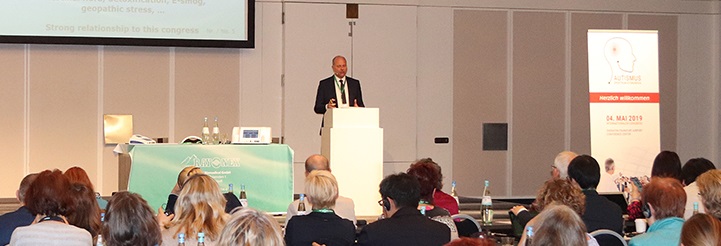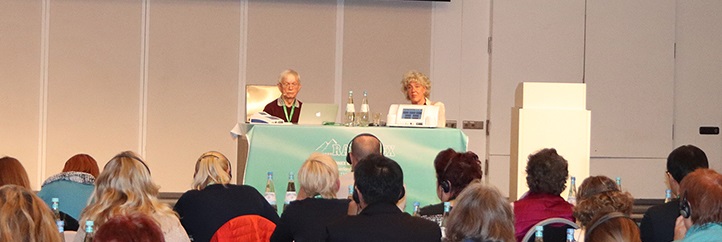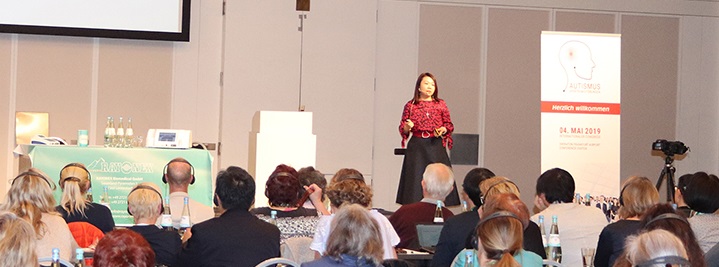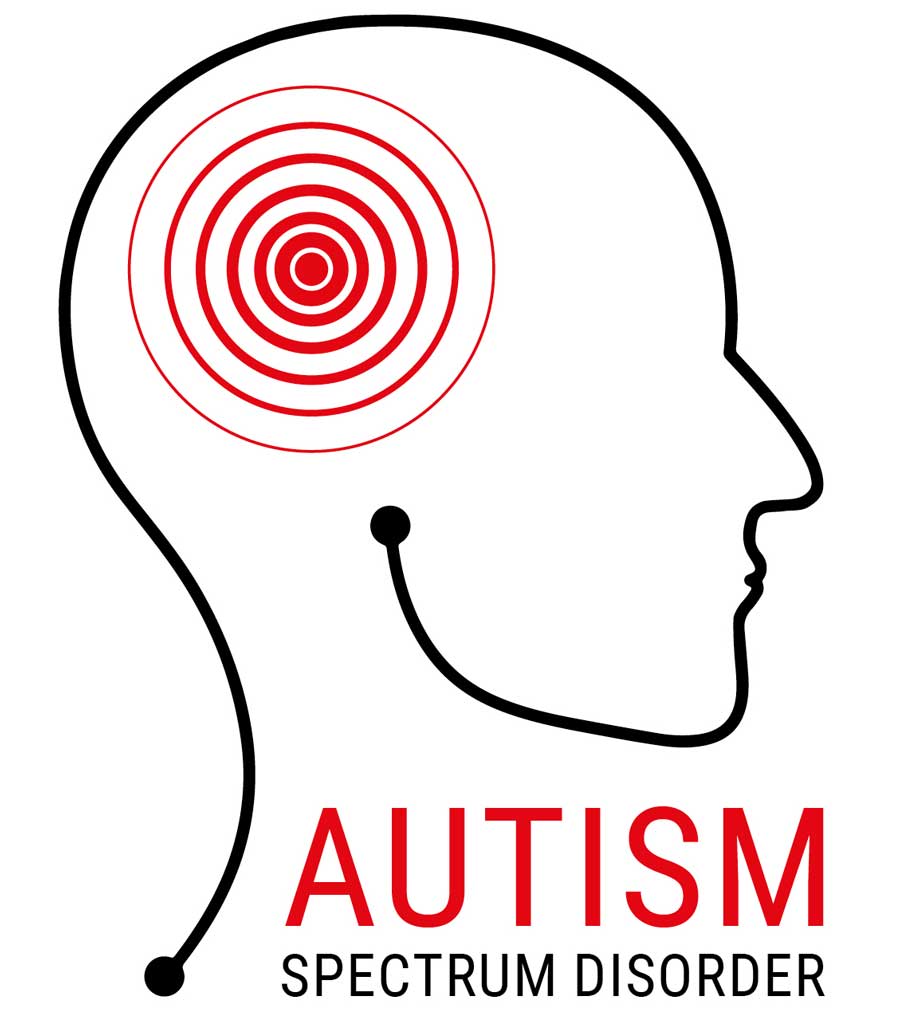Congress-info
On May 4th 2019, an International Congress on Autism Spectrum Disorders took place in Frankfurt am Main. Four therapists from all over the world and a scientist reported on the latest findings and experiences that are of great relevance beyond autism for neurological and mental illnesses as well as from a holistic perspective for many other clinical pictures.

Dietmar Heimes, Director of the Chair of Bioresonance Sciences at the Anglo Cattolica University San Paolo Apostolo in Rome
Dietmar Heimes, Director of the Chair of Bioresonance Sciences at the Anglo Cattolica University San Paolo Apostolo in Rome, opened the congress on behalf of the organizer, the Paul Schmidt Academy. He emphasized the importance of such an exchange among experts, as there are now many years of experience in combination of different therapies with bioresonance according to Paul Schmidt on numerous diseases, including the autism spectrum disorders.
Especially the view into the wide world is particularly valuable, because the combination with this cause-oriented approach has become internationally very important.
A Swedish psychiatrist and recognized expert in the field of autism spectrum disorders, combines the bioresonance according to Paul Schmidt with a rhythmic movement therapy that he developed. In Japan, a doctor complements bioresonance with hydrotherapy and other typical Far Eastern therapies. In China, bioresonance is used by a therapist right across the country in several regions to solve increasingly urgent health problems. And in Jordan, a doctor associates the bioresonance therapy with a very specific diet.
Finally, the importance of the cause-oriented approach is highlighted by the recent scientific findings on gut microbiome presented by a university professor.
The editors summarize the most important aspects in this report.

Dr. Harald Blomberg and presenter Gudrun Bunkenburg
Dr. Harald Blomberg: Bioresonance according to Paul Schmidt in autism spectrum disorders. In combination with the rhythmic movement training
The Swedish doctor and autism expert dr. med. Harald Blomberg reported on his 30 years of experience on autism spectrum disorders.
Dr. Blomberg observed in most of the children with autism that they suffer from the congenital metabolic disorder pyroluria. This disorder affects over five percent of the population. Very often, there is a vitamin B12 and enzyme MTHFR deficiency, these lasts are very important for an optimal functionality of folic acid and vitamin B12. The metabolic disorder also causes a lack of vitamin B6, zinc and other micronutrients. As a rule, a metabolic disorder is found in the family history of at least one parent of the autistic individual.
In this mixed situation, there are disturbances in the transmitter substances dopamine, serotonin and GABA. The consequences of this are the typical inflammation of the nerves, the impairment of the psyche, such as anxiety and depression, and disorders of the digestive system.
So it is not surprising that these people are often sensitive to gluten, milk protein and soy. This sensitivity causes inflammation in the intestine by gliadin and it comes to the leaky gut syndrome (permeable intestine, by disturbed barrier function of the intestinal mucosa of the small intestine). The immune reaction produces anti-gliadin antibodies (AGA), which in turn cause inflammation in the cerebellum and damage the cerebellum's Purkinje cells. As a result, there is a deficiency in the transmitter substance of the Purkinje cells GABA, which leads to the typical symptoms of autism, such as the disorders in speech and motor skills. The mentioned lack of vitamins, trace elements and enzymes also causes the disturbed formation of glutathione. This in turn severely hinders detoxification. This is especially true for the detoxification of heavy metals, such as mercury and other heavy metals. With the disadvantages for the nervous system.
Phosphorus in the form of phosphates is important for all of our body cells, for their DNA and RNA and for energy production in the form of ATP. In this way, phosphorus has tremendous importance for our brain activity. But also for the construction of our cells, as for the sheaths of our nerves, the myelin sheaths.
Due to the lack of vitamin B6 and zinc the organism acidifies, which contributes to a phosphate deficiency. This causes problems with attention, memory and myelin sheaths. Nerve inflammations are the result.
Depending on which nerves are affected, it can come to a variety of symptoms. For example, in case of an inflamed vagus nerve it leads to constipation, in case of an inflammation of the bladder nerves to incontinence, numbness, tingling and instability of the legs, in case of sciatic nerve involvement to dizziness and balance disorders in case of inflammation of the vestibular nerve and much more.
The disturbed conditions have an impact on many processes in the body, such as the synthesis and degradation of amino acids and proteins, formation of hormones, enzymes and the aforementioned neurotransmitters, as well as defense reactions of the immune system.
If disturbances occur in these areas, they result in a wide variety of symptoms, which typically occur as a concomitant in autistic individuals. Be it mental disorders, sleep disorders or allergies due to imbalances in the histamine household.
Another consequence of the metabolic disorder concerns the omega fatty acids. They, especially omega-3 and omega-6 fatty acids, are important for the cell membrane. Dr. Blomberg has observed that people with pyroluria have difficulty making gamma-linolenic acid (GLA), an omega-6 fatty acid.
Due to the disturbed nutrient conditions, the immune system is weakened, which unsettles the intestinal flora in autistic children and leads to abdominal discomfort.
Against this background, it is consistent that, in addition to exercise therapy, the regulation of the nutrient balance belongs to Dr. med. Herald Blomberg’s central therapy.
He also uses bioresonance according to Paul Schmidt to detect and harmonize energetic disturbances with the goal of helping nutrient therapy to have the best effect.

Prof. Dr. Andre Franke, University of Kiel
Prof. Dr. Andre Franke, University of Kiel: Influence of genes, drugs and nutrition on the intestinal microbiome
In bacteria, we think of pathogens. But, in reality, we are fully populated with bacteria that are vital, says Prof. Dr. Franke, University of Kiel. In the intestines is the largest ecosystem of these bacteria. We call it intestinal microbiome, the bacterial part of the microbiata. It consists of about 500 to 1000 bacterial species. At the intestinal surface they help to digest and repel pathogenic substances. The microbiome is important for our well-being and our health, as well as for autism.
The intestinal microbiome is a complex system and can be considered as a separate organ. You can even transplant it, for example with a donor microbiome, the so-called fecal microbiota transplantation. In the mouse experiment interesting observations were made. After transplanting the stool of an adipose subject into the mouse, the mouse also became obese. A very striking indication of how significant the microbiome is.
In our development we are early colonized by the microbiome of our mother. It changes in the first years of life. It shows a high variability in the first six years, before it remains stable for a long time and reduces in old age.
During the education phase in the first years of life, it reacts critically sensitive to unfavorable influences. This also applies, for example, with antibiotics. There are indications, that the resulting changes affect the development of autism and many other diseases, such as asthma.
The problem in the western world is that bacterial species die out and endanger the microbiome's ecosystem. According to observations, it changes from generation to generation.
Studies have shown that the microbiome adapts to changing living conditions. When a subject spent a long time in Thailand, the intestinal microbiome changed. When she was back in Europe, it adapted after a short time to the original environment. On the other hand, serious influences can have long-term effects on the microbiome. This happened after a salmonella poisoning. For a long time afterwards, the milieu was disturbed.
Another study showed how significant a high-fiber diet is. It is important for the stability of our intestinal microbiome. With a low-fiber diet, n the event of an infection. the intestinal mucosa and the microbiome can change dramatically.
In autism, we often deal with bowel problems. Often there is a high level of dysbiosis. This has led to a study with healthy relatives of autistic people. Very soon, conspicuous biomarkers and a disturbed intestinal microbiome were recognized.
Therapies of various kinds influence the microbiome. Thus, antibiotics do not only destroy germs, but also healthy bacteria and lead to resistances. The recovery of the intestinal microbiome is complicated and tedious.
In cancer therapy, the change of milieu plays a major role. If the patient takes antibiotics before immunotherapy, the mortality rate increases.
Diabetes therapy with metformin has been found to alter the gut microbiota.
Studies have shown that many drugs have an effect on the intestinal microbiome.
Finally, our genes play a key role in the development of our gut microbiota, as twin studies have confirmed. According to the current state of science, however, the environmental influences in the development of diseases are of greater importance as per Prof. Dr. Franke.
All of these factors can alter the intestinal microbiome, and in particular reduce the intestinal bacteria, as we often find in autistic people.

Dr. Mohammad Talal Odeh Sarhan, a doctor from Jordan
Dr. Mohammad Talal Odeh Sarhan, a doctor from Jordan: peculiarities in autism patients from the Middle East
Dr. Sarhan from Jordan is following a three-stage plan at his Biomedical Clinic for Integrative Medicine (BMC) for autism spectrum disorders.
First, the energetic analysis is carried out with the Rayoscan test. This is a test procedure of bioresonance according to Paul Schmidt, which is performed with the help of an ECG lead. So a complete check is made.
Then, a detailed energetic analysis along the test protocol for autism is performed.
The status of the nutrients (minerals, vitamins, probiotic bacteria) are checked as well as the excretion system of excreted substances, the so-called detoxification.
Finally, the exact analysis of nutritional behavior and the commonly consumed foods is also part of it. For this purpose, Dr. Sarhan uses the so-called blood group diet. This is based on the fact that people tolerate certain foods better and others worse because of their blood type. The reason for this is the food proteins, the lecithins, which react with the blood components.
On the basis of these examinations, an individual therapy of the autistic subject is developed, consisting of the energetic harmonization of the disturbed frequencies with the bioresonance according to Paul Schmidt, partly in the clinic and partly as home therapy, and the including of the appropriate nutrients, as well as optimizing the diet to the needs of the patient. Also with Dr Sarhan, as with Dr. Blomberg, glutathione plays an important role. He combines intravenous administration with the prescription of grape seed extract. After about four weeks, the follow-up examination with the Rayoscan takes place.
Dr. Sarhan reported an impressive case study. A 17-year-old boy responded to everyday questions hyperactive and screaming. After the therapy, the answering capability was still not quite easy, but the screaming had stopped completely and the hyperactive behavior had decreased significantly.

Dr. Chan Yan Wai, Therapist from Hong Kong
Dr. Chan Yan Wai, Therapist from Hong Kong: Common Features of Autism Spectrum Disorders in China
Dr. Chan Yan Wai can look back on her experience with more than 600 autistic children. Particularly striking is the rapid increase of autism in China in the last twenty years. Example: In Hong Kong alone, one autism case occurs every 27 children.
The symptoms were accompanied by heavy metal contamination and impaired oxygenation. Frequently it comes to respiratory diseases, especially rhinitis, to allergies, disturbed muscle tone and poor body coordination.
In addition to the considerable environmental pollution, she points out the responsibility to an unfavorable life- and nutrition style. Too much junk food, too many carbohydrates, too much gluten and food additives, supplemented by an often excessive salt intake should be mentioned. Finally, the electro smog burden is significantly involved. Even toddlers are confronted with e-products.
In the energetic analysis with bioresonance according to Paul Schmidt she regularly finds disturbed conditions in the acupuncture meridians, nutrients, pollutants and microorganisms.
Interesting is the statistics, which the doctor worked out on the most common energetic regulatory disorders. Acupuncture meridians were dominated by the lungs, liver and small intestine. Common abnormalities of minerals were found particularly in phosphorus, zinc and cobalt, in vitamins it was the B12, B9 and B6. The pollutants were mainly noticeable arsenic, mercury and aluminum. Borrelia, coxsackie and herpes simplex were frequently found in the energetic disturbances in the milieu of the microorganisms.
Dr. Chan Yan Wai specializes in bioresonance according to Paul Schmidt, combined with rhythmic movement training according to Dr. med. Blomberg and supplemented with dietary supplements.
In bioresonance therapy, energetic harmonization in the area of the immune system, liver, kidneys, intestines and respiratory organs as well as the nervous system predominate.
Dr. Chan Yan Wai described the case of a five-year-old boy who was diagnosed with autism at the age of two. During pregnancy, the mother developed an infection with beta-hemolytic streptococci, which led to the ingestion of antibiotics. At the age of eleven months, the boy got the hand-foot-and-mouth disease. He has suffered from sleep disturbances since birth.
Treatment included detoxification, dietary supplements, bioresonance therapy and rhythmic exercise training. Dr Chan developed the bioresonance therapy in three steps: The first step was the energetic harmonization of the immune system, the general detoxification and the psyche. In the second step, the energetic harmonization of the immune system, the detoxification of energetic burdens with heavy metals and blood circulation. And in the third step, the energetic harmonization of the immune system, detoxification of energetic loads from vaccinations and the digestive system.
Which led to a significant health improvement. Impressive was the observation of the boy's piano playing. Before the treatment, he violently and indiscriminately hit the keys. After the treatment, a calm and melodious piano playing took place.

Dr. Atsutomo Morishima, Doctor from Japan
Dr. Atsutomo Morishima, Doctor from Japan: Experiences from the autism clinic in Japan, with the use of the special approach of hydro bioresonance therapy
Dr. Moroshima has been treating people with neurological and mental disorders, including developmental disorders such as autism in his private clinic for several years.
According to his experience developmental dysfunctions are based on the influence of environmental pollution, disturbed nutrient conditions, diseased processes of the nervous system and the hormonal system. Background are genetic factors, metabolic disorders and disorders of the immune system.
Corresponding energetic analysis with bioresonance according to Paul Schmidt regularly show energetic disturbances in these areas.
During the treatment Dr. med. Mososhima combines different procedures. For example, he supports the detoxification with naturopathic help, especially with herbs and teas. People with restricted mobility are treated with chiropractic. In addition, the natural dietary supplement is one of his basic therapy program.
Bioresonance according to Paul Schmidt supports him in recognizing and harmonizing the energetically disturbed conditions. He supplements it with a special method, hydro-bioresonance therapy. This is based on the fact that he combines the frequency treatment with the inhalation of hydrogen gas. In his observation, this helps to overcome and regenerate inflammation of the nervous system. In 15 out of 18 patients, this would significantly alleviate the developmental disorder.
A case study from his long experience: A five-year-old boy with autism showed the typical behavioral problems and difficulties in communication. A normal school attendance was impossible. The boy had to be taught in a special supportive school. In the anamnesis it was noticeable that he had suffered fever and urticaria after an earlier vaccination.
In the bioresonance test, in addition to the indications towards a disturbed nervous system, there were also energetic regulatory disorders in the liver, intestine, kidneys, as well as indications of energetic environmental pollution, in particular aluminum, nickel and lead.
In the first phase, there was a so-called naturopathic detoxification therapy, as described above. Subsequently, several energetic harmonizations were performed with the hydro-bioresonance therapy.
After a year, the boy's situation had improved so much that he was able to attend a normal school.

Conclusion
Despite the different starting situations and also country-specific peculiarities, there is a broad similarity in the experiences of the physicians with regard to the causal relationships in autism-spectrum disorders. This is especially true in terms of disturbed conditions in the metabolism and the intestinal environment, and in the environment of microorganisms, the importance of environmental burdens and in connection with the nutrients household. The presentations have shown us how useful the combination of the various clinical and complementary methods are for the benefit of the affected patients.
And something else became clear that underlines the holistic aspect: most insights apply not only to the autism spectrum disorders, but also to other neurological and mental symptoms as well as many other diseases.